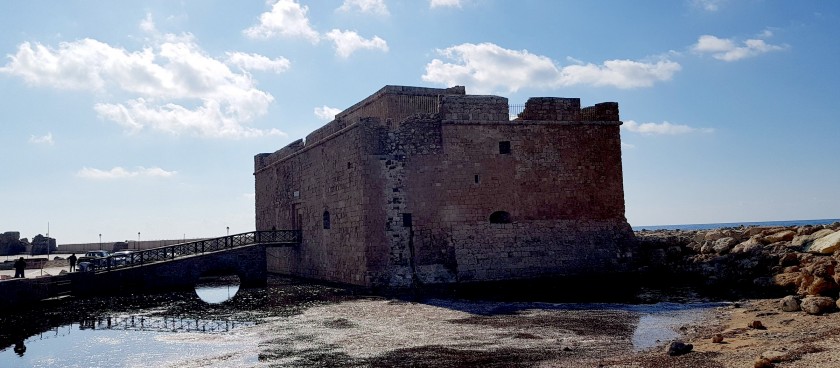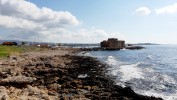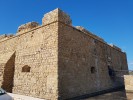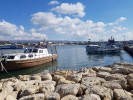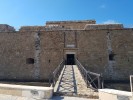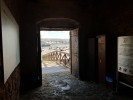- #CY12
- Kato Paphos Harbour, Coastal Broadwalk, Paphos, Cyprus
- +35726306217
- Working hours*:
April 16 - September 15, daily: 08:30 - 19:30
September 16 - April 15, daily: 08:30 - 17:00 - Prices*:
€2,50
For organised groups consisting of more than 10 persons there is a 20% reduction on the entry fees. - * - opening and closing times as well as entrance prices, are subject to alterations without notice. Visitors are advised to check before visiting.
- 34.7537950, 32.4071650 Copy to clipboard Copy
-
#Castles
The Paphos Castle or Paphos Fort is located at the Kato Paphos harbour and is considered to be one of the most famous attractions in Paphos. It is built on the ancient wave breaker on the west side.
The Paphos Castle was originally a byzantine fortress which was built in order to protect the port. It is a Frankish tower inside a casing of the Venetian period. After its destruction it was rebuilt by the Ottomans during 1592 A.D, as the relevant inscription stated on top of the entrance of the castle. Older, byzantine fortifications also seem to have existed in the same position.
The remains of the tower which were added during the ottoman reconstruction, belonged to one of the two towers which the Frankish kings built, after the catastrophic earthquake in 1222 A.D. These two towers were linked together with a wall. The Genovese took over in 1373 A.D and raised the walls. They also altered the castle trench, removing part of the wave breaker that connects the seaside tower with land.
One of the two Frankish towers remained deserted until the end of the 15th century A.D and was then destroyed by an earthquake. Before the ottoman occupation in 1570 A.C, the Venetians blew up both the towers as they chose to defend the Ammochostos – Nicosia – Kyrenia axis. What has been saved today is the ottoman reconstruction of the west Frankish tower and the Venetian additions. At a distance of 50 metres towards the east, are the ruins of the second Frankish tower.
The ground floor is made up of one central room in which various small areas were used as cells during the Turkish occupation. Underneath the ground floor there are two small underground cells in which the longest serving prisoners were kept. On the first floor, the main area was used as a mosque and the rest of the rooms for the accommodation of the small Turkish guard. On the roof of the castle there are twelve ramparts for the cannons. The canons were removed from the castle along with the ottoman administration in 1878.
The Castle of Paphos is built of strong and large stones and the castle is connected to the harbour via an arched bridge. There are very few windows but the view from the top of castle is amazing.
From the beginning of the British occupation, the British colony used the castle as a storage area for salt. In 1935 it was declared as an ancient monument and it considered to be one of the emblem of the Paphos district. Since then the department of antiquities has taken measures to preserve it.
Lastly, many festivals and functions take place In front of the castle, such as the Aphrodite Festival during September. Included in this festival are famous operas from all over the world, directed by famous artists.
